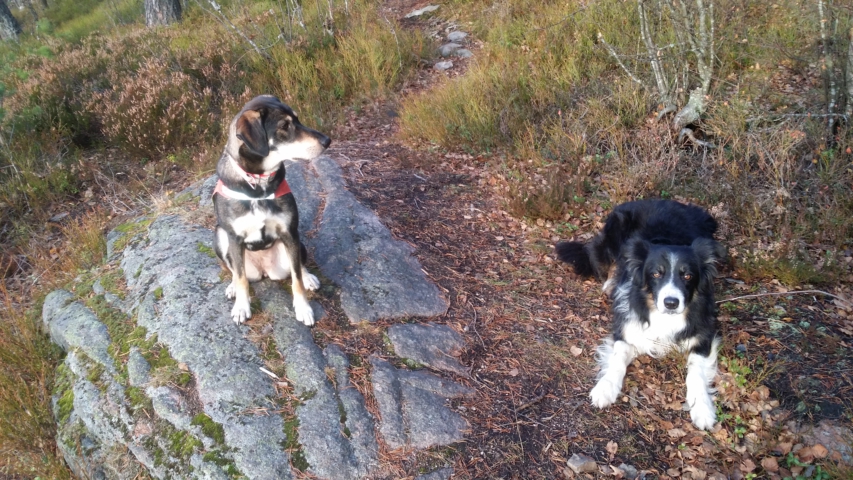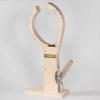-
Posts
1,591 -
Joined
-
Last visited
Content Type
Profiles
Forums
Events
Blogs
Gallery
Everything posted by Trox
-
Hi, the machine uses Juki spare parts, you can buy them anywhere. And this will happen from time to time on any machine, its a screw with much use. Do not use a screw from the hardware store, it needs to be top quality so it do not break off inside the needle bar. Then you have to drill it out again, I have tried that a couple of times on other machines. It can be expensive to buy a new needle bar. The screw you need is: Juki part# SS 6110710-TP screw 11/64-40 L=6.5 Thats the part number, and the machine name is JUKI TSC 441. Thats all you need to order a new screw from Juki. Not many clone brands has their own spare part program, no need for that. They should have been using a allen screw there like Duerkopp Adler does. I see you do not have to change the hole needle bar on the 441 if you have a stuck broken screw in it. You can change the small bottom part of it with the needle screw and thread guide, named "needle stopper" # 210-92408. Tor
-

My Very First (Almost) Homemade Sewing Machine
Trox replied to bikemaniac's topic in Leather Sewing Machines
Hi Lucas, Takk for sist. I did not see your topic before now. I happy to see your project was a success, very nice built. And that a 90 W motor is proven enough is a bit of surprise, but I see the gear ratio. The time you where visiting I had no sewing machine set up with a converter, but I have had many before. I have used them mainly on 3 phase clutch motors because the lack of such power in my workshop. Even on 3 Ph old Efka variostop`s ( position clutch motor with electronic brake and clutch) They always have worked out great. I haven't had any use for the pedal (pot meter) on any of them, I only limited the top speed on the converter and used the clutch. I could alway go as slow as I wanted on the regular clutch motors, a stitch an hour if I wanted to. On the Efka variostop`s they only worked as converters because the motor control box regulate 6 to 12 pre set speed on the pedal and will compensate for any speed limitations set on the frequency converter (in the lower speed end that is). I recognize the humming you talk about, thats just the wrong frequency (speed) on the motor. Then I just set the hertz a bit different, some hertz up or down and it disappeared. I understand that can be difficult on zero, but then I guess the problem must be the pedal. Perhaps an adjustment or changing it will get rid of it. I am glad the Global worked out well to, it looks like a very nice machine. Overall a job very well done. Tor -

Replacement Blades For Skiving / Splitting Machines
Trox replied to ClaireAshton's topic in Leather Tools
That's terrible bad news, it feels like somebody close have died..........- 18 replies
-
- replacement
- spare
-
(and 5 more)
Tagged with:
-
Hi and thank you, I guess it tells you to oil in every marked oil holes. Lubrication like every other industrial. One drop in every oiling point prior to use is important on these heavy machines.Tor
-
Hi, there are oil holes marked with red and small oil holes on every moving part's. One drop of oil in every oil hole before use or once a using day. Use white sewing machine oil to avoid stains, do not use rust prevent type of oil on spray box, because its acid in it. The hook is the most important part, make sure it's always has a oil film on it. Do not over oil the machine, then you will have oil all over your place; a little drop will do the job. Good luck Tor
-
Sorry John, I never seen a video of the needle hook timing on that machine. Use a new right size needle according to the adjustment/service manual. Set the needle bar height (I think it should be about 15 mm over the needle plate, U can use a piece of paper to see that its not penetrating it). Prior to this make sure that feed dog is in the center of its cutouts and the needle hits in its center again. Make sure you have the right distance between the needle and the hook (as close as possible with out hitting each other) when this is done, adjust the needle hook timing on the hook gear; unscrew set screws and move it on the shaft (if necessary). If this is OK and it still won't stitch. Check your bobbin case opener; it should open and pass bobbin thread true. If not it may not stitch. Pfaff uses a special tool; a needle bar clamp to hold the needle bar in the right position when timing, I use a hose clamp with some leather inside to protect it. And clamp the needle bar in its right position when turning the hook gear. Be careful not to damage it (or buy the right tool from Pfaff) Good luck Tor
-
Hi Strigamort, yours look much better than the one I have. Perhaps its a much better knife, it hard to tell from the pictures alone. Does it have a micro bevel? It looked like that to me. It typical Tandy to put the "professional" on it to add value. No professional bought their knifes from them, when you could have a CS Osborn for the same price. I am afraid the steel cant take a normal bevel without breaking off the tips, you are officially warn about that now. I would keep it in the box as a collector item, it looks very good. In some years collectors will want it.
-

What Is This Tool Called, And Where Do I Find It?
Trox replied to conceptdiba's topic in Leatherwork Conversation
Hi Mali Hi, yes I see you live in Oslo too. I will PM you after the holiday and we can meet up at my shop or yours. As I mention above, I do not have much use for this tool as I am mostly using weg tan leather and have all the tool/machines I need for that job. But I am compulsive tool collector, so perhaps I get it anyway. I do have several extra leather sewing machines, splitters etc. If you need something like that; just let me know. Vi snakkes senere MVH Tor -
You still loose 50 $ I had an early one from the Leather factory stamped "Tool Co Inc". when I got it (several years ago) it was "new", the steel was broken off inside the handle so I had to change the handle. The blade was just "crap" and the tips broke off. No, try to win a CS. Osborn Newark (or early Harrison) rosewood and brass (type # 70) round knife instead. I have seen them as low as 40$ on EBay.com. I have many round knifes, but these are among the best and to a decent price too. These "low priced" knifes often need some work (remove pittings and rust). If you need a perfect one you can visit Bruce Johnson tool site and you will have one cutting right out of the box for about twice that money. But then you never need an other knife again. Tor
-

What Is This Tool Called, And Where Do I Find It?
Trox replied to conceptdiba's topic in Leatherwork Conversation
I have tried the cheap type of soldering iron with temperature control (but not with the same product as Malchik). I did not find time to build a proper heat control (as posted before). The problem is temperature consistency or the lack of such, the cheap irons getting to hot sometimes too. I have a friend that have used this systems for years (the LeatherGuru) He told me this right away, but of course I wanted to try and fail myself (as always) If I had the need for this system more often (working with chrome tan leathers) I would have bought a proper French "Filet Electric" tool. Or at least an accurate temperature control. With the proper tool there are a number of different product you can use, but with a few degrees wrong temp. and your work is ruined. If you need cheap bits for you iron, by the ones from Campbell Randall. The ones from Ebay are not the right ones (it does not have the right shape for the "filet tool", its for creasing lines on the edge of your wegtan leather only) Tor -
Hi Tannin, StrigaMort showed you a proper clicking knife above. I mostly use one of my round knifes for cutting leather, I like a stiff blade and I use the old stocks of knifes. However, when I cut around a cardboard pattern or such, I use a Blanchard Indispensable knife. It has a very thin, yet stiff blade with a long bevel edge on the left side; for riding along the cardboard pattern. I have the knife in your picture, but I find the blade to thin and flexible for my use. Yet its a fine utility knife, you can alter the handle and make it flat on two sides so it do not roll of the bench. You can also make your own blades for it out of HSS hacksaw blades. It work well as is too and its a upgrade from a Stanly knife. Make sure you have a good cutting surface too, its as important as a good knife. I use HD Polyethylene, same as the clicking board (but a bit softer) and butcher tops. You can buy the Blanchard here if you are based in the USA http://www.fineleatherworking.com/indispensable-knife or by Vergez Blanchard http://www.vergez-blanchard.fr/boutique/liste_produits.cfm?type=42&code_lg=lg_fr&num=2 There are other French shops who sells it without a required minimum buy as with Blanchard, Google is your friend. Good luck Tor
-
And I will be there to give him a warm welcome, (to warm today; 91 ° Fahrenheit.) Thank you Paul Tor
-
Hi Jimi, yes something like that. However, with a modern buffing compound not jeweler rouge ( thats for jewelers, use something for steel) I have the felt wheel on a bench grinder for that kinds of jobs and a German aggressive polishing compound. Keeps the steel free of rust and feed the leather much better. Tor
-
To late for that my friend, both them ; lock stock and barrel. Only joking I just bought one, I had some of his others from before. I think he might have some left, ask him. Back from holiday I see, bought any nice leathers? Thank you very much for the gift, very nice. Tor
-
Hi Claire, I agree with you about Al Stohlman`s books, it was my only way to learn when I started to do leather work. And I am glad I did that way, because then I Learned the basics right from the start. I thought Norway and Switzerland was the two most expensive places to buy leather tools. Here is a stitching horse sold and made here in Norway http://www.finn.no/finn/torget/annonse?finnkode=42320422&searchclickthrough=true&searchQuery=j%C3%B8rn+jensen+as#resultat?keyword 534,- US$. And here is a very good one made in Switzerland (see picture), preferred by our Swiss master saddler Walther Roth. Price : expensive (I do not remember, but see the topic in leather history: "tools of a Swiss saddler"). If I was going to put some money in to a new clamp, this would be my choice. Because of the very good locking mechanism, among other things. Normally I use one of my sewing machines for my stitch work. I do my heavy stitching on a 441 and finish of by hand on a French stitching clamp. If somebody want to pay extra for hand stitching they will get that too. Thanks Tor
-
Hi Angelt, I`m 98,9 % sure it is a blind stitch machine. https://www.google.no/search?q=blind+stitch+machine&rls=com.microsoft:no:IE-Address&rlz=1I7ACPW_no&tbm=isch&imgil=FPDHQ1VSMTG20M%253A%253Bhttps%253A%252F%252Fencrypted-tbn3.gstatic.com%252Fimages%253Fq%253Dtbn%253AANd9GcQad5Cteb-464gbdPXP91U_NLBJDt3eRqomUjeipMEMcN5IXWGkHA%253B640%253B480%253Bx4Mfaz3hfsmawM%253Bhttp%25253A%25252F%25252Fwww.fusionservices.us%25252Frecondition_sewing_machines&source=iu&usg=__Se72n2eNKWeDmVDLDfH2fkWhirY%3D&sa=X&ei=8m_JU4zVJ6Wi4gTmq4AY&ved=0CCEQ9QEwAQ&biw=1280&bih=874#imgdii=_ Come on give me another puzzle. Hi Constabulary, yes I remember they looked in to that possibility too. They measured every stitch length to find patterns, but the stitches was nice and even as always. Then they sent the RAF to bomb the Dürkopp factory in Bielefeld just to make sure. I am glad they missed the Kochs Adler factory. Joke aside, they probably produced war material there, like motorbikes with firearms. Valuable sewing machine patterns and parts where probably lost there. Tor
-
Hi, Juki has no machine named "leather machine". For qualifying to be a leather machine it has to have triple feed ( unison feed=lower, top and needle feed working together). Triple feed machines are set up to sew leather with smooth feet`s and feed dog. It also needs a large capacity hook/bobbin to take heavy threads. Juki has several classes of machines that are used as leather machines. From flatbed mediums of the upholstery class to the heavy cylinder bed TSC 441. The last is a heavy stitcher that takes thick threads, often used as a saddle stitcher. I need the class and subclass number (on a small plate on the machine head) and a picture before I can tell you if your`s is such machine. Its not easy to identify the machine on the picture. However, it looks like a blind stitch machine used in the textile industry for joining to pieces of fabric together with an invisible stitch. Its for sure no leather machine. Tor
-
Hi Jimi, You did a great job and worked very fast. The only thing remaining is buffing up the needle plate to a high shine on your Buffing wheel. I do that to all my plates so the leather will feed better. Tor
-
Wow, somebody really know how to get paid, or maybe not. Is that Micky Mouse $ or US$
-
Hi Dingus, you can buy the parts you need for a leather setup on http://www.kwokhing.com/pfaff/. You could also lowering your feed dog in level with the needle plate, that will reduce the markings. With smooth feed dog and feet's the needle does most of the feeding on a triple feed leather machine anyway. Tor
-
You will get them from Pfaff Industrial if you write them. Its some here too, but I do not know if they are of the old head. http://www.universalsewing.com/tek9.asp?pg=parts_pfaff Some aftermarket parts here: https://www.college-sewing.co.uk/Pfaff335SewingMachineParts Tor
-
Thank you, now I find allot of pictures about it; looks like you have great fun.
-
I am sorry, I do not know what "LRP" stands for. Google suggested Loan Repayment Programs, but that must be wrong. I see Role Play in it, but thats all. It would be nice knowing a little bit about it. Thank you Tor
-
Thank you Aaron for pointing that out. Not that I usually shop there much. Nevertheless, I have seen they sell several products with names that sound just like a famous good product. I bought some "Pure Neatfoot oil" from them and got "Pure Dingo assoil" instead. I was recommended that product, but I`m sure they meant the good one from another supplier. I stick to the Danish gold quality leather oil instead, until I get hold of the right type. Hi LeatherLegion, nice mod on your Cowboy 4500. Is it a modified slotted plate or is it custom made from scratch? It reminds me of the flat plate on my good old backup; Adler 5-27. I use my slightly modified 441 stirrup plate in such situations, its lowered a bit to gain footlift. (And get more support for the foot). I think the original plate are unnecessary high. We where discussing these plates in an other topic and Leatherkind made this stirrup plate on his 3D printer. He sent me one to try out and it actually works well. Its a very good method to test out attachments like this before you make the real thing. However, the plastic is very strong so it would last for a good while too. I am sorry for the Off topic, its kind of related to the original topic. Thanks Tor
-
Yes, it might be because its made before they changed to the new metric standard. There is a small hole over the big one for the takeup spring. There should be a pin in there that push on the mechanism behind your new unit; when you lift the presser foot. That again pushes the disks apart and release the top thread. You see this long pin # 91- 013 091-05. Here is a page of the new type, look for the same in the old manual. Tor








